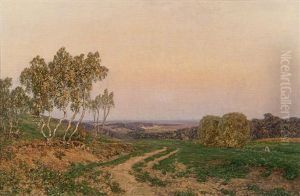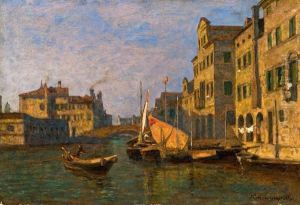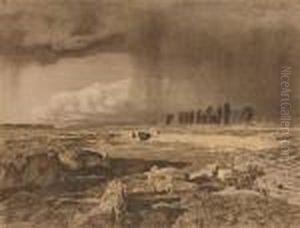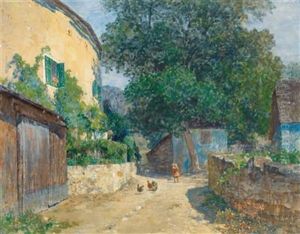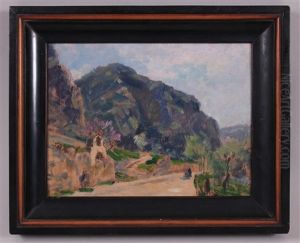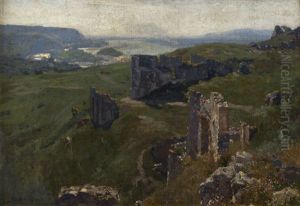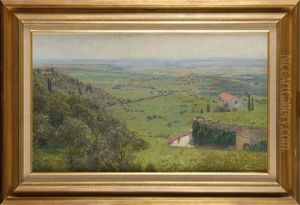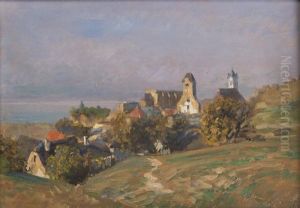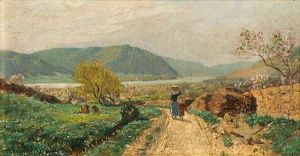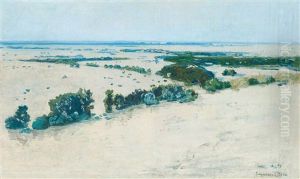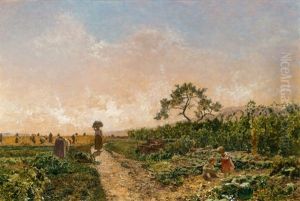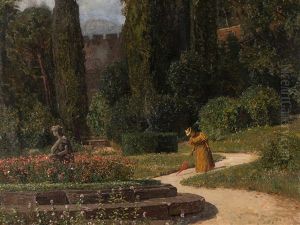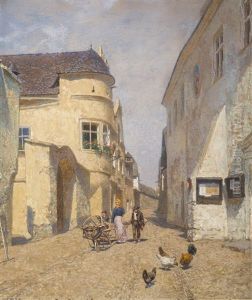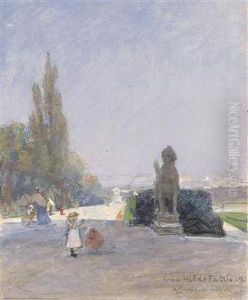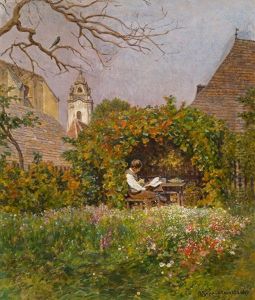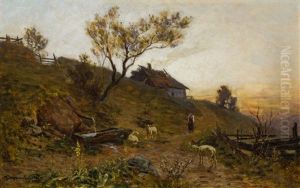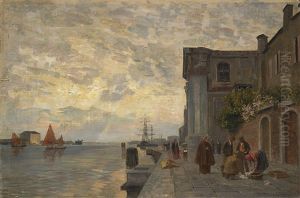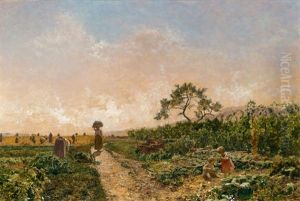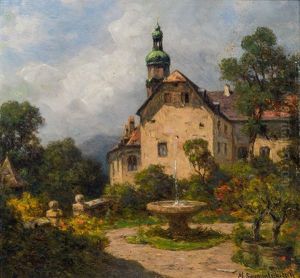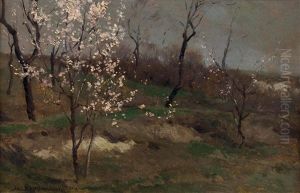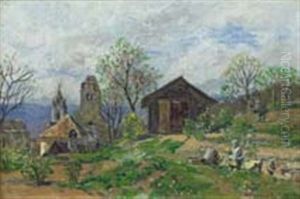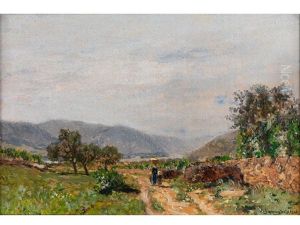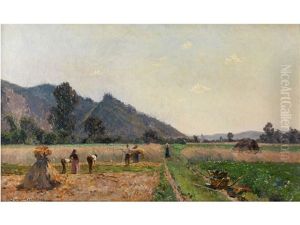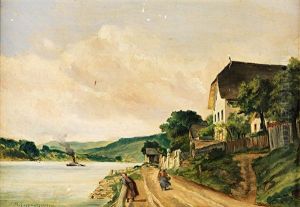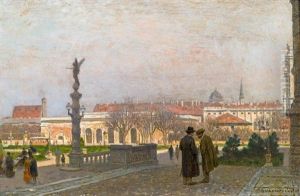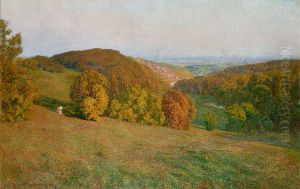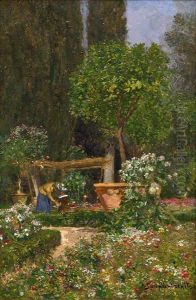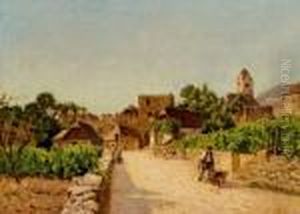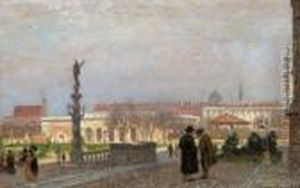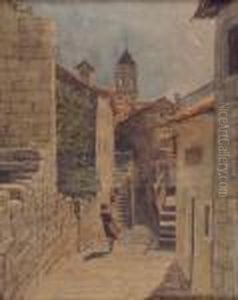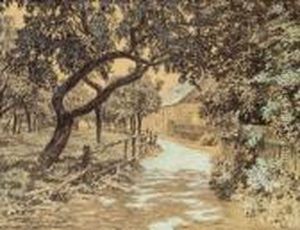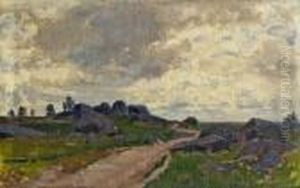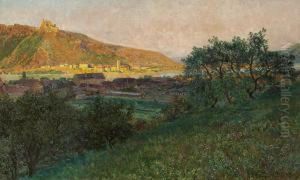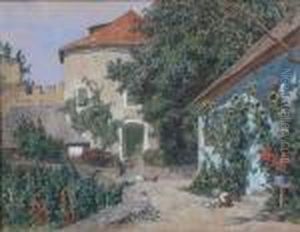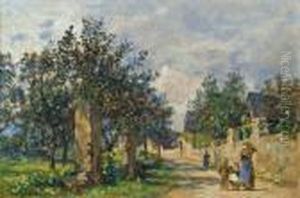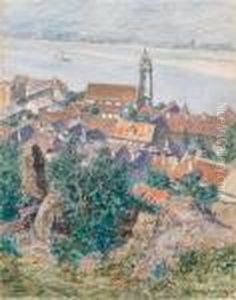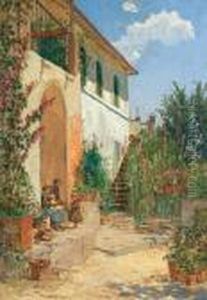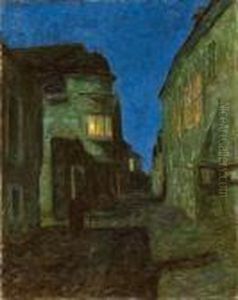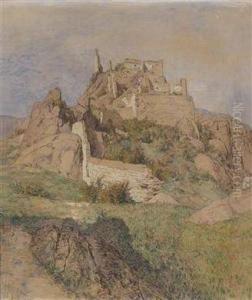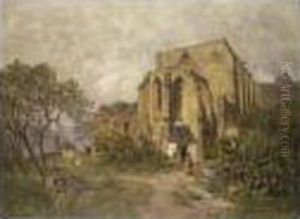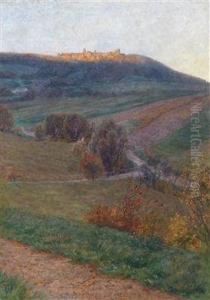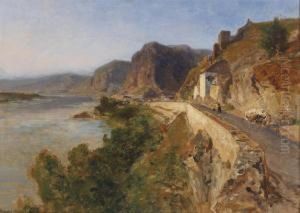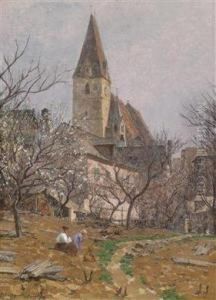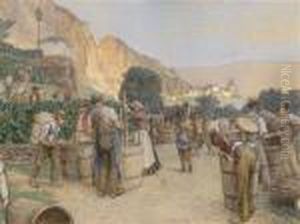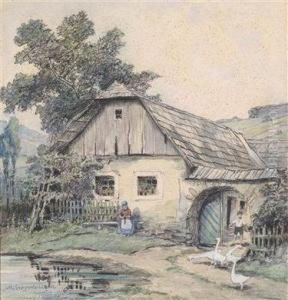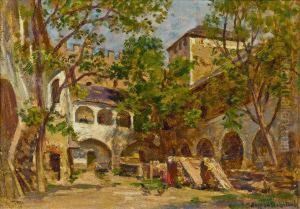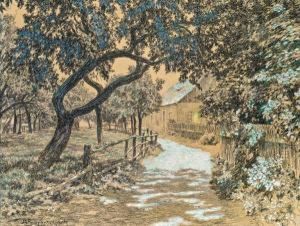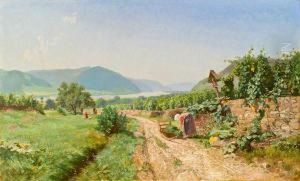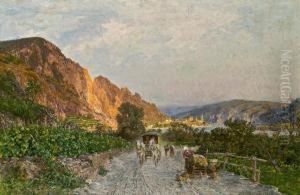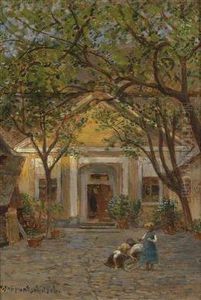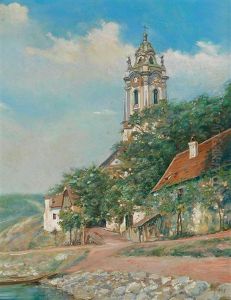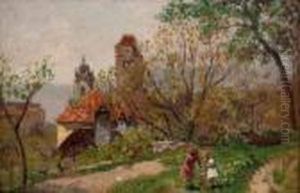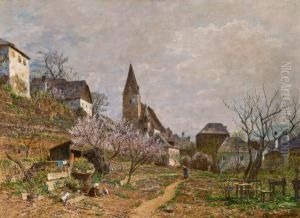Max Suppantschitsch Paintings
Max Suppantschitsch was an Austrian painter, born in 1885 in the town of Voitsberg, Austria. He was known for his landscape paintings and his participation in the art scene of Vienna during the late 19th and early 20th centuries. His work reflects the traditional style of the Austrian school, influenced by the Biedermeier period as well as the later Impressionist movement that was gaining popularity across Europe at the time.
Suppantschitsch studied art at the Academy of Fine Arts in Vienna, where he was exposed to the teachings of notable artists such as Christian Griepenkerl and Siegmund L’Allemand. During his studies, he honed his skills in painting, particularly focusing on landscapes and genre scenes. His works often depicted the Austrian countryside, showcasing the natural beauty of the region with a detailed and realistic approach.
After completing his education, Max Suppantschitsch remained active in the Viennese art world. He participated in several exhibitions and was a member of various artistic circles and societies, which helped him to establish a network of patrons and fellow artists. His paintings were appreciated for their technical skill and serene quality, often capturing the tranquil aspects of rural life and the changing seasons of the Austrian landscape.
Throughout his career, Suppantschitsch continued to develop his style, incorporating elements of light and color that were reminiscent of the Impressionist movement. However, he maintained a certain level of detail and clarity in his work that was characteristic of the earlier Biedermeier style, which remained popular among Austrian artists of the time.
Max Suppantschitsch's contribution to Austrian art was recognized during his lifetime, and his works were collected by both private collectors and public institutions. Despite the changing artistic trends of the early 20th century, including the rise of Modernism, Suppantschitsch stayed true to his traditional roots, leaving behind a body of work that embodied the spirit of the Austrian landscape.
He passed away in 1953, leaving a legacy as one of Austria's noteworthy landscape painters of his era. His works continue to be appreciated by art historians and collectors, and they offer a window into the picturesque and pastoral world that he so skillfully captured on canvas.
